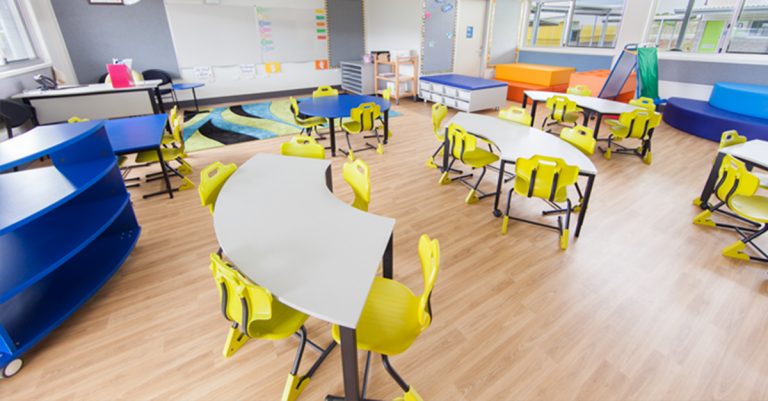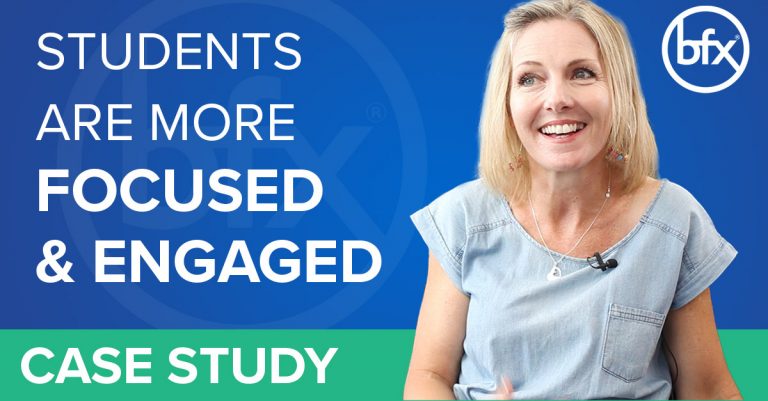A New Era Is Dawning
The industrial model that has been the driver of education in Australia since 1793 is obsolete and we now have the opportunity to recontextualise the New-New learning environments of the future.
New-New learning environments need to be based on inquiry-based pedagogies that foster the development of skills and capabilities required for the future focused workforce such as: critical thinking, communication, connectivity, collaboration, culture and creativity.
The environment and furniture should be adaptive and flexible, catering for the diverse needs of all students.
Future pedagogies should provide opportunities for students to be curious and to transfer surface level content into deeper real world contexts.
The teacher-centred explicit teaching approach, whilst still essential, should be only one of a number of pedagogies used in a contemporary classroom including:
- Agile Learning; Project Based Learning;
- Flipped Learning; Play Based Learning;
- Self-Directed Learning
- Design Thinking
By providing a range of pedagogies the learning of all students is personalised.
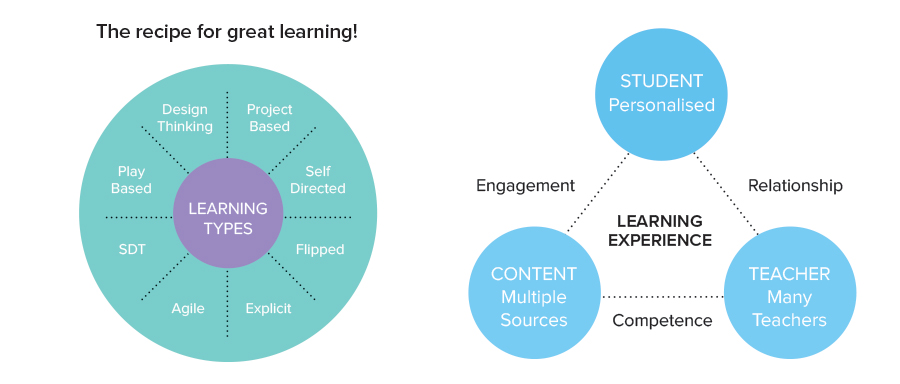
The New-New
Schools have the opportunity to transform their Industrial Model classrooms into innovative, state-of-the-art New-New learning environments. Teachers, as change agents in the recontextualisation of learning spaces, should consider colour, lighting, furniture, and design in their effect on learning.
Across a school, each space would be unique and allow students the flexibility to move, collaborate, and express themselves in creative ways. As learners, the teachers and students need to be able to easily move and rearrange furniture, as learning needs change and wherever their learning takes them.
Every space will look different, but every space is designed with the same goals in mind: personalised learning, multiple sources of engagement and many teachers.
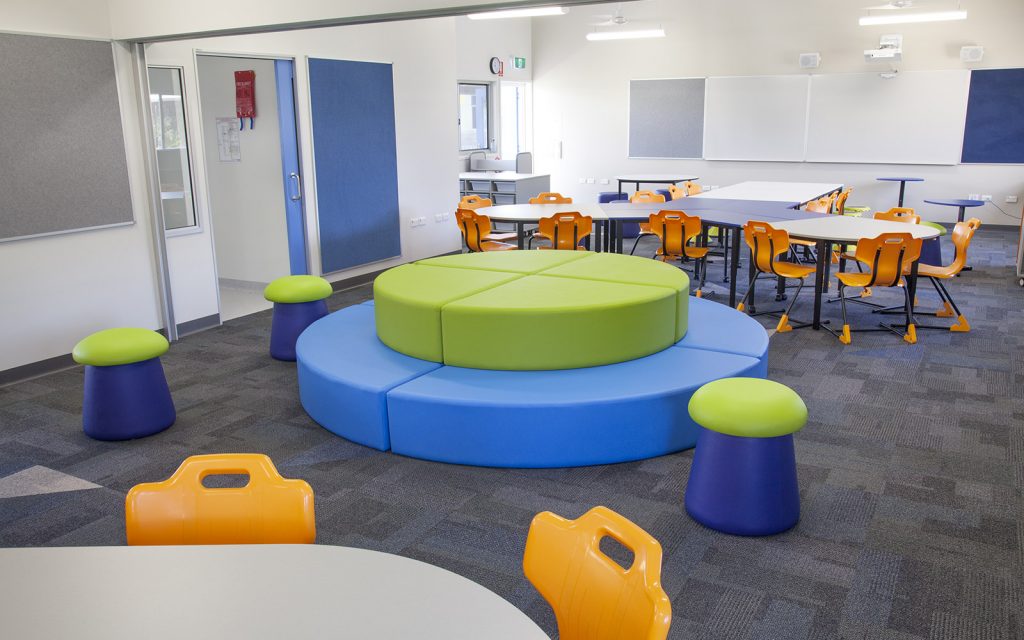
Let The Classroom Teach
In the Industrial Model the classroom teacher was often the sole source of knowledge in the room. However, in the New-New environment, learning can be facilitated by: the teacher, fellow students, technology, and the resources available in the physical learning environment. They are all teachers.
Classroom teachers are still the most influential factor in the classroom. Their role, however, is changing rapidly as they choose emerging resources at their disposal to personalise the learning for each student.
In the New-New classroom, the work of teachers is shared when students seek support from their fellow students. If harnessed and facilitated, this can be beneficial to the learning continuum. Our teachers and students are critical in providing formative feedback to each other on the learning journey.
The advancement of technology, as a learning enabler, has witnessed a transformation in the possibilities for learning.
The “walls can teach” and should be interactive, promoting student engagement and discussion, and making real world connections and applications.
With the aid of technology, students now have access to content and feedback from a range of sources including:
- Internet
- Google Suite
- Wikipedia
- YouTube
- Blogs
- Podcasts
- Skype
The list seems to be endless. The beauty is that the content and data is becoming more precise and interactive, with artificial intelligence one conduit, to transfer the content knowledge into deeper learning and beyond the current known contexts.
Technology as a learning enabler, can now with the assistance of virtual reality, place students in real world contexts within their physical classrooms.
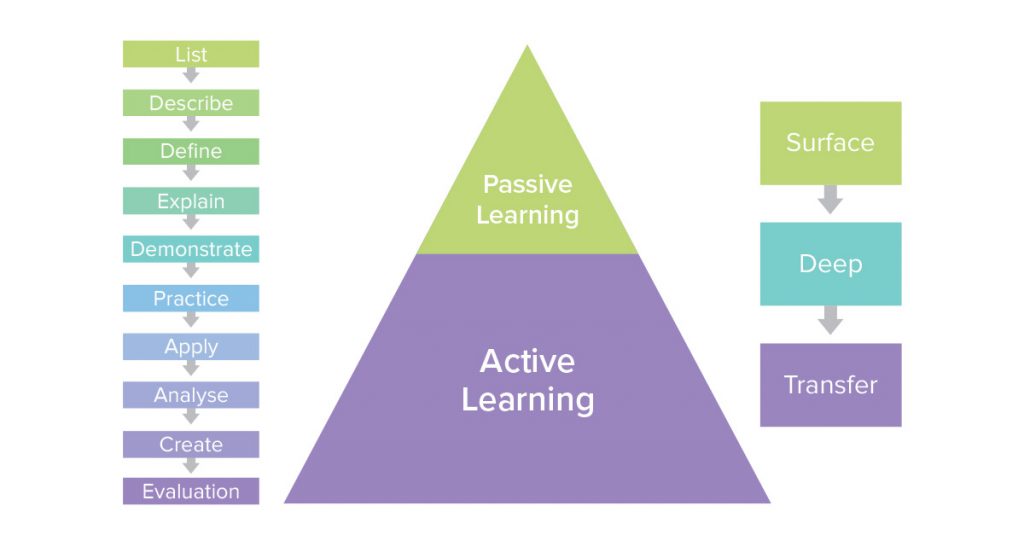
Let The New Age Begin
If the Industrial Model is obsolete we must envision a New-New model for our learning environments. In developing these learning environments we should consider that all school learning contexts are different and therefore require a contemporary lense for the spaces.
Metacognition and “How students learn best” is a fundamental 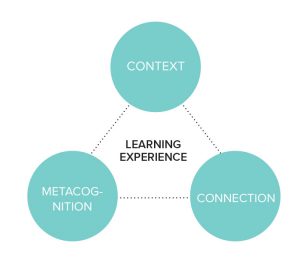 component of the learning experience. The challenge is that the Industrial Model has been a successful process in many established contexts and accordingly many learning environments are attached to the “tried and true” and the concept that “past success will ensure future success”.
component of the learning experience. The challenge is that the Industrial Model has been a successful process in many established contexts and accordingly many learning environments are attached to the “tried and true” and the concept that “past success will ensure future success”.
In context, students learn best when they are engaged in the learning process and when they are encouraged to learn in different ways. In each learning environment, students will be at varying stages on the learning continuum.
New-New learning environments and experiences are closely associated with classroom learning that is actively transferred and applied to the real world context. As such, classrooms need to connect the learner to the outside world, learners need to be able to work collaboratively and be curious critical thinkers who can convey their thoughts and feelings in creative ways.
In New-New Learning environments, the learning would be:
- Safe, fun and engaging
- Purposeful and meaningful
- Connected to the Real World
- Mobile and agile with multiple focal points
- Differentiated for a range of learners
- Technology-based to enable learning
- Open to many sources of learning – Classroom teacher, fellow students,
resource-rich spaces, real-life connections and technology. - Flexible enough to support opportunities for both students
and teachers to learn independently and interindependently in both small and large groups.





